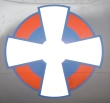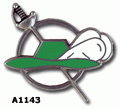|
Poslao: 08 Okt 2016 20:42
|
offline
- Skywhaler

- Legendarni građanin

- vampire and philosopher, po©smt, rhd©t
- Pridružio: 13 Dec 2013
- Poruke: 6053
- Gde živiš: Esgaroth
|
- 18Ovo se svidja korisnicima: Luka, draggan, randja26, Mirage 2000N, ray ban11, lacko, amaterSRB, Mercury, pedja63, shmele, pavlo, Aleksandar Tomić, Georgius, stalker, GnaeusDomitiusAhenobarbus, aleksmajstor, MB120mm, carpbuster
Registruj se da bi pohvalio/la poruku!

|
|
|
|
|
Registruj se da bi učestvovao u diskusiji. Registrovanim korisnicima se NE prikazuju reklame unutar poruka.
|
|
|
|
|
Poslao: 09 Okt 2016 22:11
|
offline
- yufighter
- Zaslužni građanin
- Pridružio: 04 Sep 2005
- Poruke: 680
|
"Мигови 29 догодине Србији" каже Диковић у овом чланку у Политици
[Link mogu videti samo ulogovani korisnici]
|
|
|
|
|
|
|
Poslao: 10 Okt 2016 08:59
|
offline
- Voja1978

- Elitni građanin

- Pridružio: 11 Dec 2010
- Poruke: 2410
- Gde živiš: Beograd
|
Mozda si citao prvo izdanje jer u ovom jutarnjem Dikovic doslovce kaze: "Vodimo i razgovore s Ruskom Federacijom o eventualnoj nabavci aviona Mig-29, koja treba da se realizuje tokom 2017". Nije bas da nema nista o toj temi. Plus je pomenuo uvodjenje Laste do kraja ove godine.
|
|
|
|
|
|
|
Poslao: 10 Okt 2016 09:08
|
offline
- aramis s

- SuperModerator

- Pridružio: 18 Jul 2007
- Poruke: 28932
- Gde živiš: iznad smoga Beograda
|
ray ban11 ::Kao raketa ... 
Spectacular vertical take off MIG 29 at RIAT 2015
U neka zlatna vremena, to je bio standardi program i kod nas.
|
|
|
|
|
|
|
Poslao: 10 Okt 2016 09:26
|
offline
- ray ban11
- Legendarni građanin

- Pridružio: 17 Sep 2010
- Poruke: 24204
|
aramis s ::
U neka zlatna vremena, to je bio standardi program i kod nas.
A bilo je i demonstracije poletanja sa jednim motorom na `PF` a drugim na relantu -mali gas . 
|
|
|
|
|
|
|
|
|
|
|
Poslao: 10 Okt 2016 13:05
|
offline
- zixo

- Legendarni građanin

- Pridružio: 27 Sep 2006
- Poruke: 23374
- Gde živiš: Beograd
|
Na ovoj fotki se vidi i AKU-58 (desni avion).

|
|
|
|
|
|
|
Poslao: 10 Okt 2016 13:52
|
offline
- ray ban11
- Legendarni građanin

- Pridružio: 17 Sep 2010
- Poruke: 24204
|
^
Tako je ,jasno se vidi lanser AKU-58 ( H-29T/L,H-31A/P , H-35 te H-59/M ) .Veoma je moguce da su 4 sirijska MiG-29SM zapravo Izdelie 9-18 ( dovodjenje 9-12B na standard 9-18/ SM ,ne SMT ) kako je to uradjeno kod jemenskih samo sto njihovi imaju i uredjaje za punjenje gorivom u letu pa se cesto oznacavaju i kao SMT.
Citat:Nonetheless, Syria’s MiG-29s have always been heavily reliant on foreign assistance to remain operational. Reportedly, this assistance also included help in solving (zabranjeno)s in the fuselage and wings. A number of MiG-29s also received a new camouflage pattern during overhaul at ‘The Factory’ at Neyrab Airbase. The total number of MiG-29s acquired by Syria in 1988 still remains somewhat of a mystery. The much-reported claim of forty-eight is likely to have been exaggerated, and only twenty-two to twenty-four are actually believed to have been delivered. Although this was enough to equip one squadron, plans for a second squadron with these fighters had to be shelved. Around fifteen to twenty MiG-29s should still be operational with 697 Squadron based at Seen (commonly known as Sayqal). A few planes are permanently detached to T4 (commonly known as Tiyas) airbase.Russian Aircraft Corporation MiG continues to actively fulfill its contractual agreements with Syria (designated as customer 760). August 2010 saw the delivery of four flight simulators of an unknown type under contract number ‘776041110116’. In a secret agreement fulfilled in 2011 four SyAAF MiG-29B were upgraded to MiG-29SM standard, adding to Syria’s airborne ground attack capabilities. As the MiG-29B uses the 9-12 airframe which differs from the MiG-29SM’s 9-13M airframe, Mikoyan developed a special variant (likely lacking the Gardenia jammer) to suit Syria’s needs, as it did for India with the MiG-29UPG.
The development of this variant cost a total of 531,1 million Russian rubles, as opposed to the 925,7 million rubles used for developing the MiG-29UPG. Mikoyan’s 2011 report containing information about the upgrade was taken down and later re-uploaded with the information about the recipient of this deal, Syria, removed, emphasising the secretive nature of the deal.
The MiG-29SM features many improvements over the MiG-29B, such as an upgraded N-019ME radar, the capability to carry a larger payload and many more smaller upgrades to cockpit displays and navigational and communication systems. Arguably the most important upgrade, considering the MiG-29’s current use in Syria, comes in the form of an expanded arsenal of air-to-ground weaponry, such as the Kh-29T(E), Kh-31A/P missiles and KAB-500-Kr/OD guided bombs. Delivery of these weapons was included in the MiG-29SM contract.
Lastely it enables the aircraft to carry the dreaded R-77 (AA-12 ‘Adder’) air-to-air missile, which poses a considerable threat to foreign aircraft intervening in the conflict. MiG-29s have already been spotted in Syria carrying the AKU-170E launch rails used to carry this missile, as seen in the image below.
u tekstu
The Syrian Arab Air Force, Beware of its Wings
January 16, 2015
 [Link mogu videti samo ulogovani korisnici] [Link mogu videti samo ulogovani korisnici]
Jos malo sirijskih od ranije ( slike i snimci ) ...
 [Link mogu videti samo ulogovani korisnici] [Link mogu videti samo ulogovani korisnici]
 [Link mogu videti samo ulogovani korisnici] [Link mogu videti samo ulogovani korisnici]
 [Link mogu videti samo ulogovani korisnici] [Link mogu videti samo ulogovani korisnici]
 [Link mogu videti samo ulogovani korisnici] [Link mogu videti samo ulogovani korisnici]
 [Link mogu videti samo ulogovani korisnici] [Link mogu videti samo ulogovani korisnici]
 [Link mogu videti samo ulogovani korisnici] [Link mogu videti samo ulogovani korisnici]
|
|
|
|
|
|

